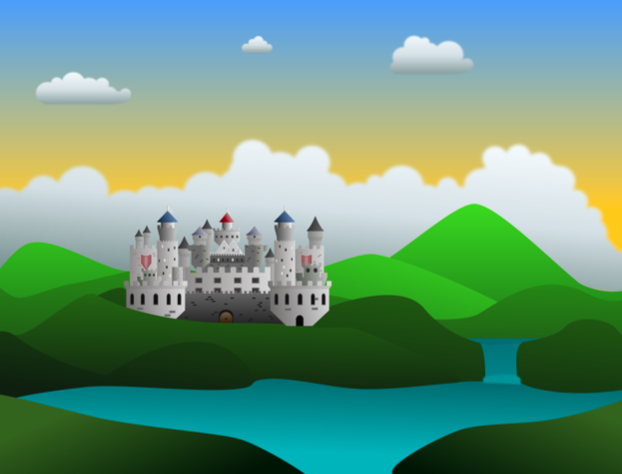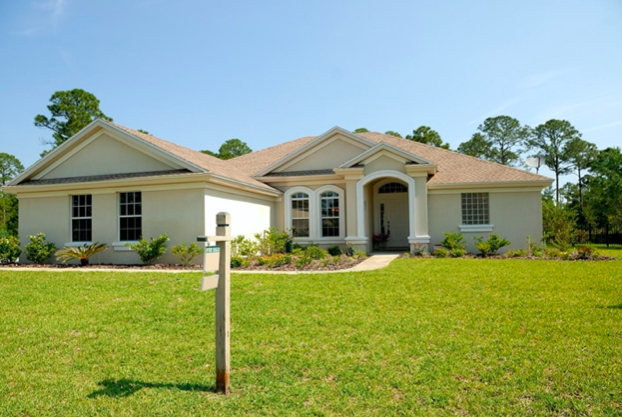Key Factors to Keep in Mind When Creating Your Landscape Design
Planning is critical to successful landscape design. Before beginning a new project, especially one that calls for time, money, and hard work, there are many things to consider.

You would never consider letting the architecture of your home depend on what happens during construction and what materials are available; go with the flow. And yet, when it comes to landscape architecture, it is frequently what occurs. The surroundings are just as important as the bricks and shingles that make up your home's structure. A well-designed landscape architecture brings out the best in your house and gives your landscaping the sturdy "bones" it needs to stay in good shape year after year.
Enhancing the look and functionality of outdoor space is part of the landscaping, which goes beyond merely planting trees and grass in the empty spaces between buildings. Also, so many factors must be considered while creating a landscape that it may seem intimidating at first.
Factors to Keep In Mind
1. Land Features
Look at the vegetation in your backyard. Although it may be attractive, it is not a good idea to let things happen as they, please. Instead of merely adding plants, bushes, or flowers to your environment, how about adding more? If you have room in your backyard, consider hiring expert to build a sturdy, attractive deck with an outdoor kitchen. This increases your living space and allows you to have fun and unwind with family and friends.
Think about the main functions your yard serves. Most homes regularly use their outdoor space for play, gardening, and entertaining, relaxing, and occasional picnics. Plan the landscape design following these goals. When you consult the designers, keep in mind all the users of your yard, especially kids and pets. Then you can select landscape designs that are appropriate for them.
2. What's Your Budget?
Your budget should be one of the first factors considered while designing a landscape. Nothing is worse than getting near to completion of a project and realizing you lack the funds to complete it. Create a list of all the improvements you want to make to your garden, along with the plants and features you want to add. Calculate the approximate cost of each of these projects, either on your own or with the assistance of a reputable landscaping business.
Remember to include labor, equipment, soil, compost, mulch, water, seeds, and plants in your budget as any extras like stones, fountains, and other features. If you overspend on paper, you probably overspend in practice as well. Before beginning, reduce the scope or search for ways to introduce changes gradually.

3. Space
People have always designed their ideal gardens only to discover that their properties are too small to accommodate them. This is a simple remedy as long as you plan your design before you begin digging.
Consider sketching out your yard with measurements, similar to how you have written the budget. Now enter the yard elements you want to have while also giving measurements. Walking outside and setting markers near where you're thinking of building or digging can be helpful. This makes the area you are dealing with more tangible in your mind.
Many activities go on in the yard, which adds to the house. Typically, a yard can be separated into three sections: the front, rear, and service areas. The type of area, required space size, activity type, and desired closeness to other activities and structures are the main factors determining where activity areas should be located. The place at the front of your house where you and guests enter, the cooking, eating, and entertaining, the play area and dog run, the secret garden or relaxation area, the vegetable garden or hobby area, and the trash/compost/work area are a few examples of spaces.
The construction of outdoor rooms in the yard is arguably the most crucial spatial concept for a good garden design. Plant beds, sod areas, arbors, garden walls, planters, trees, level changes, and concrete surfaces are frequently used to divide these sections. The features give the spaces a room-like impression by defining or enclosing them. Most people like to be in safe and sheltered environments rather than open and exposed. Therefore, designing rooms on a human scale is crucial for psychological comfort. The first wall or starting point of an outdoor room is frequently the house's exterior wall. Uses that conflict ought to be kept apart.
4. Available Tools
Gardening gloves and a spade are all needed for many do-it-yourself landscaping tasks. Yet, many more need specialized supplies, heavy-duty equipment, and even trained operators to run machinery. You can make sure you have all the tools you need by studying before you start. For instance, you should get hedge clippers and loppers to build a garden hedge for privacy. You will require powerful digging equipment and a trained driver to build a pond water feature.
5. Soil Types And Climates
When selecting the plants and the landscape concept, you should consider the local climate. Create a yard map, identify sunny or shaded spots, and note the wind direction to determine which design element would work best there. Think about the type of soil in your yard. It may impact drainage, pH, and the best-growing plant types. Planning for underground drainage must be done based on the kind of soil. Also, if necessary, the soil must be treated to make it into a more irrigation-friendly variety, such as humus soil.
The kinds of plants you can put in those spots will be significantly influenced by where natural sunlight hits your property at different times. By consulting with your landscaper, you may more accurately decide which flowers, trees, and shrubs will flourish in whole light versus partial sun. Some plants thrive in the shade. Consider the amount of moisture that different plants require to thrive as well. Anything that needs a lot of water shouldn't be exposed to direct sunshine to dry out.
Count the portions of your yard obscured by the fence, shed, house, and other shadow-creating structures. Plants that can tolerate partial sunlight or shade should be placed in these places.

6. Consider The Future
Consider the future appearance of the landscape design. Choosing such a design in the first place was probably motivated by a few factors. Will such arguments still be relevant in a few years? Pick a particular landscape plan based on its roomy design and accessibility to every part of the yard. The primary goal of picking the landscape design is defeated since the plants and saplings you choose will likely develop into enormous trees in a few years.
7. Consider The Function Of Plants
Plant materials in the landscape serve three primary purposes from a design standpoint: utilitarian, structural, and aesthetic. Plants order and define areas architecturally and provide a visually pleasing atmosphere. Plants are helpful because they can change the area's light, temperature, and humidity to make it more comfortable for the user. In addition to providing food for homeowners and wildlife, plants can be employed to minimize noise and odor.
Plants are literal or figurative barriers to privacy and safety for psychological comfort. Physical barriers, which include fences, walls, and plant hedges, obstruct both views of and access to a location. Implicit barriers, usually small plants, obstruct access but not views. In addition to purifying the air, plants keep soil from eroding and losing nutrients, maintain soil moisture, and replenish the soil with organic matter.
Because of these factors, the appropriate plant species should be picked early in the planning. The functional capabilities of the plant varieties are chosen so that their intended use in the future and the necessary space can be considered simultaneously.
Trees and significant to medium-sized shrubs are essential plants in the landscape for structure and usefulness; they impact microclimates, spatial organization, and security issues. The plant can produce more warm microclimates and a more practical, structured, and energy-efficient yard based on three key characteristics: size, form, and texture.
8. Put Time Into Consideration
When choosing a plant, one must consider the plant's growth rate, mature size and form, and maintenance requirements. Depending on the size of the site, the design goal, and the anticipated amount of maintenance, fast-growing plants may or may not be desirable. Knowing a plant's eventual mature size is crucial for installing it in the optimal location and with the appropriate space.
Allowing plants enough space to grow can be challenging because the usual mature size is frequently based on ideal conditions. A site's environmental factors might influence whether a plant grows or stays smaller. Plants placed too closely together (to mimic a fully developed environment) will be challenging to maintain. Give the plants enough room to touch one another when they are wholly grown and a reasonably solid growing mass forms. Providing space between the plant and the house's side is crucial to ensure air circulation and proper home maintenance. Planting too close to utilities, such as air conditioners and meters, is another typical error.
9. Landscape Maintenance
After everything is said and done, the maintenance phase of your new landscape architecture starts. Because of this, you must take landscape upkeep into account right away in your planning. By initially creating low-maintenance landscaping, you can considerably reduce and simplify your future maintenance responsibilities. You can reduce future landscape upkeep by using hardscaping, native trees and plants, water features, and irrigation systems.
Choose native species whenever you can. Fewer resources are needed to maintain sites built to thrive in their native climatic conditions.
The design form will highly impact the maintenance schedule. For instance, a garden landscape with geometric features and a sophisticated layout could need more frequent upkeep than one with organic designs. Please ensure the site's invasive plant species are eradicated, and ongoing maintenance is done to ensure their absence.
In conclusion, meticulous planning and attention to detail are necessary for a successful landscape design. While planning your outdoor space, essential elements like equipment, plant choices, hardscaping, and lighting should be considered. Also, landscape design software can help you visualize your plan and make any necessary changes before implementing it. The software can be helpful but shouldn't replace expert counsel and knowledge; remembering is crucial. You can build a stunning and valuable outdoor environment that fits your needs and exceeds your expectations with careful planning, excellent communication, and the appropriate resources.
